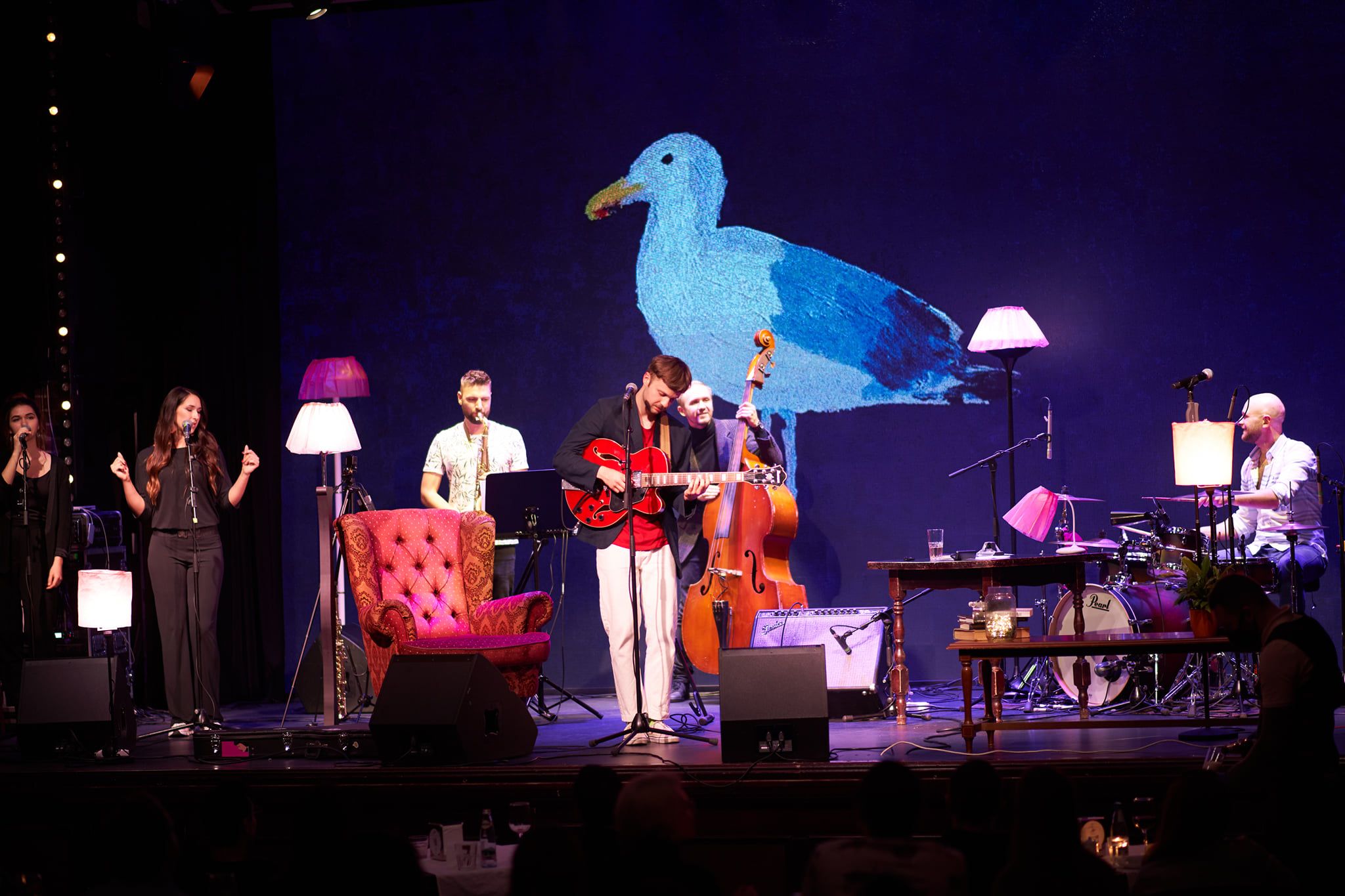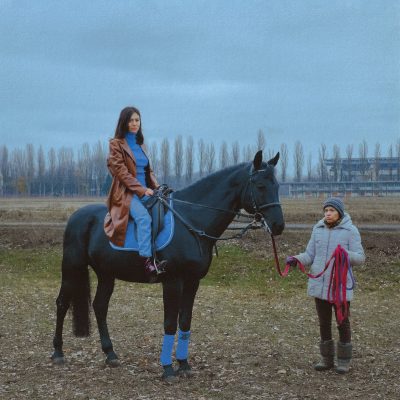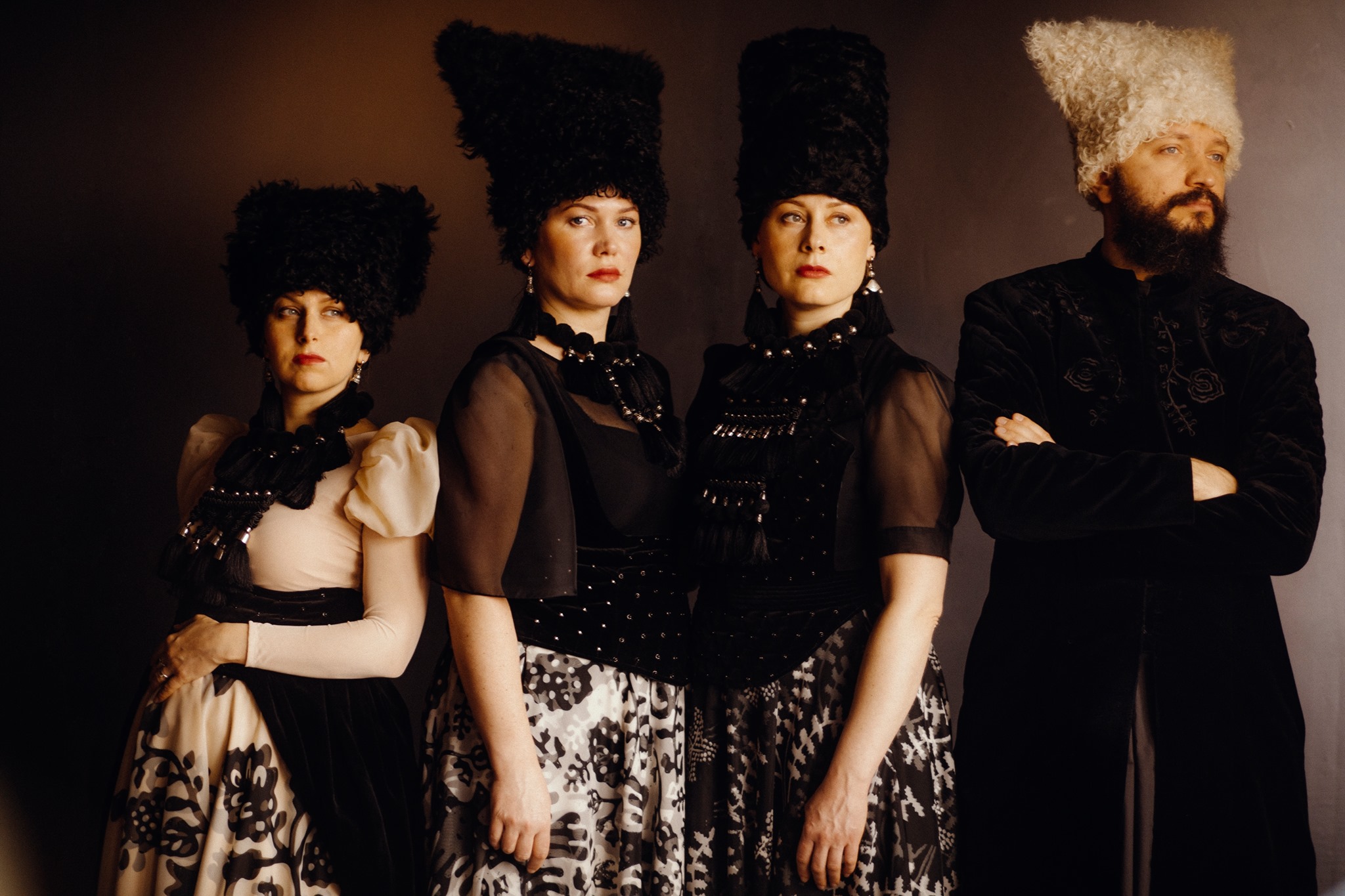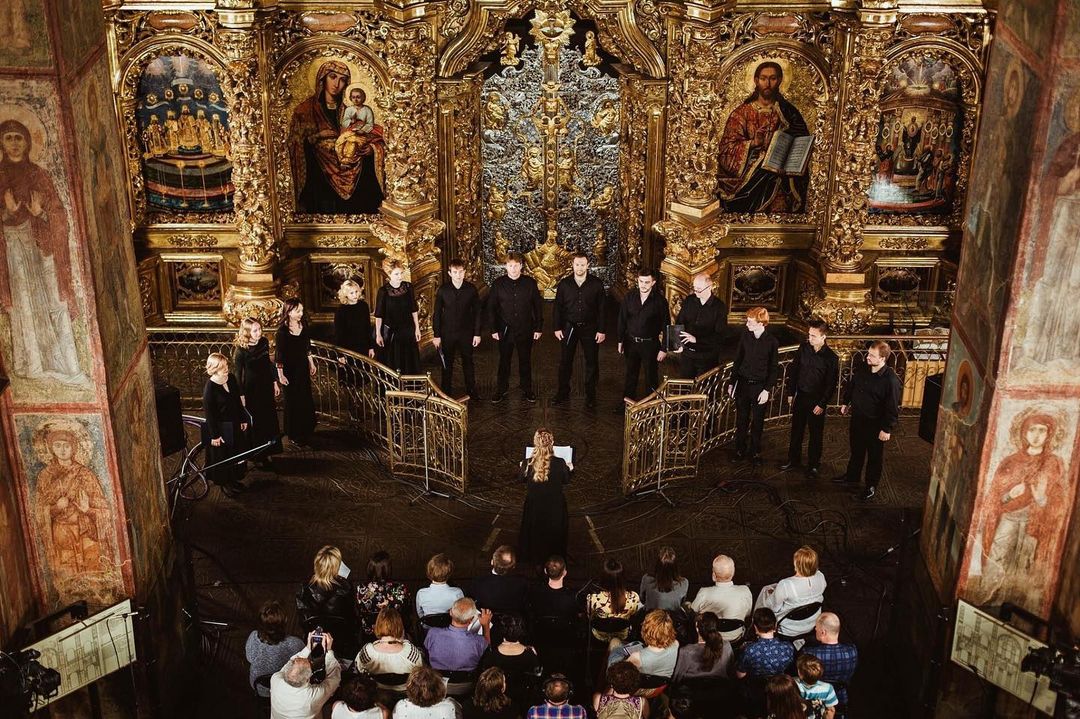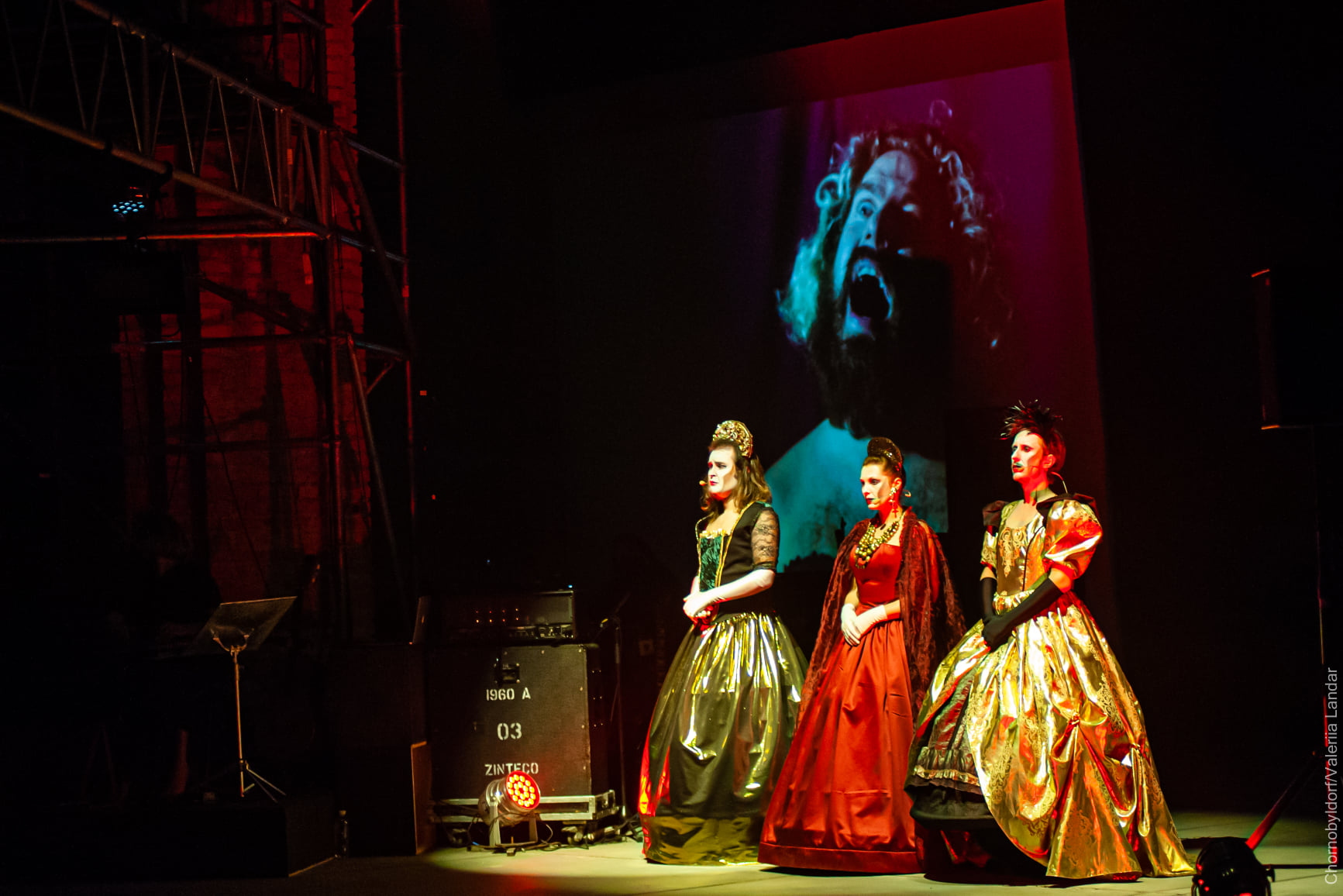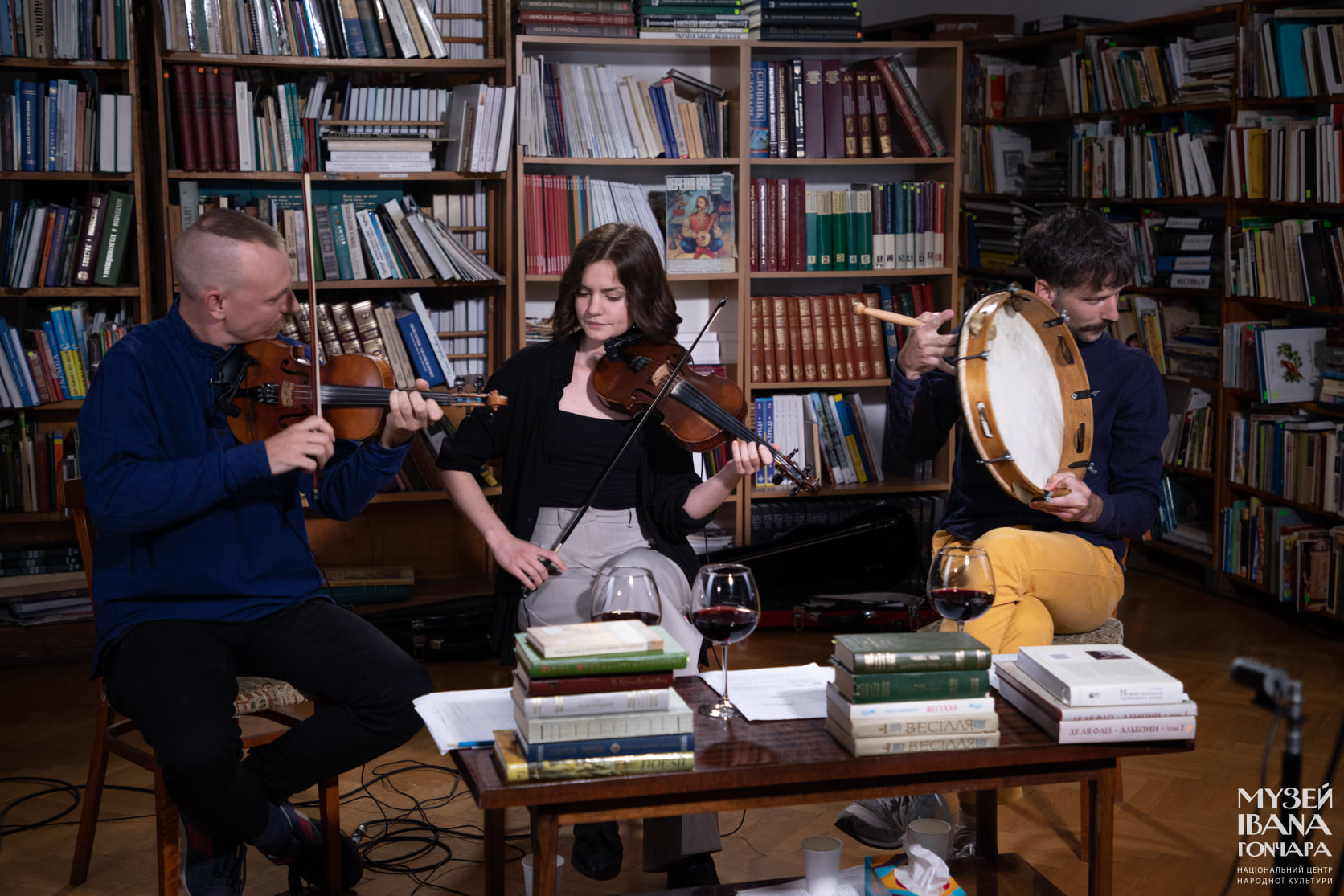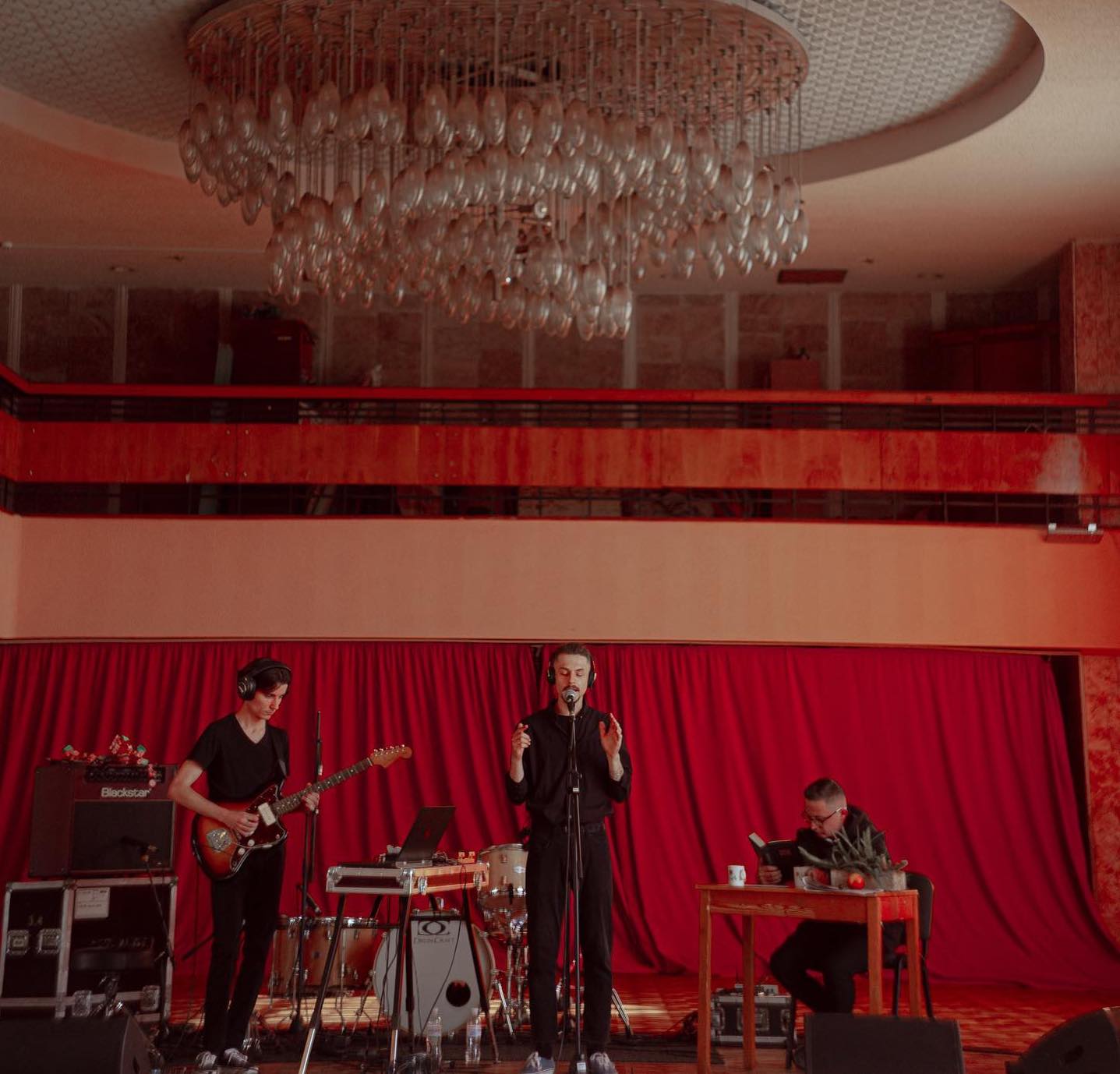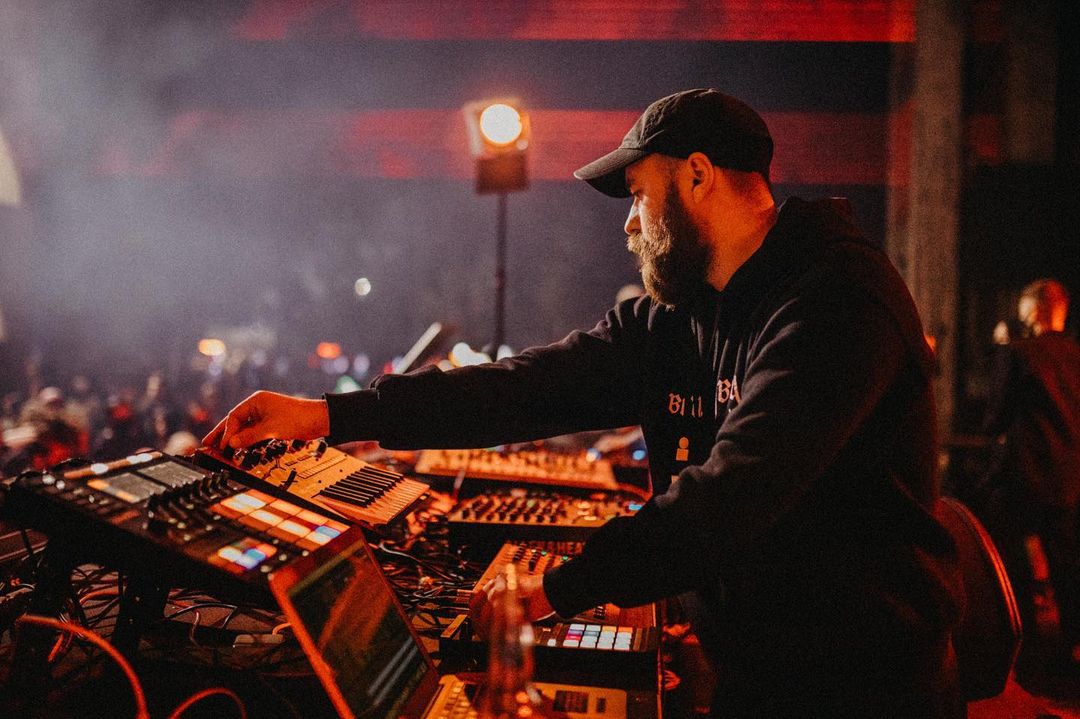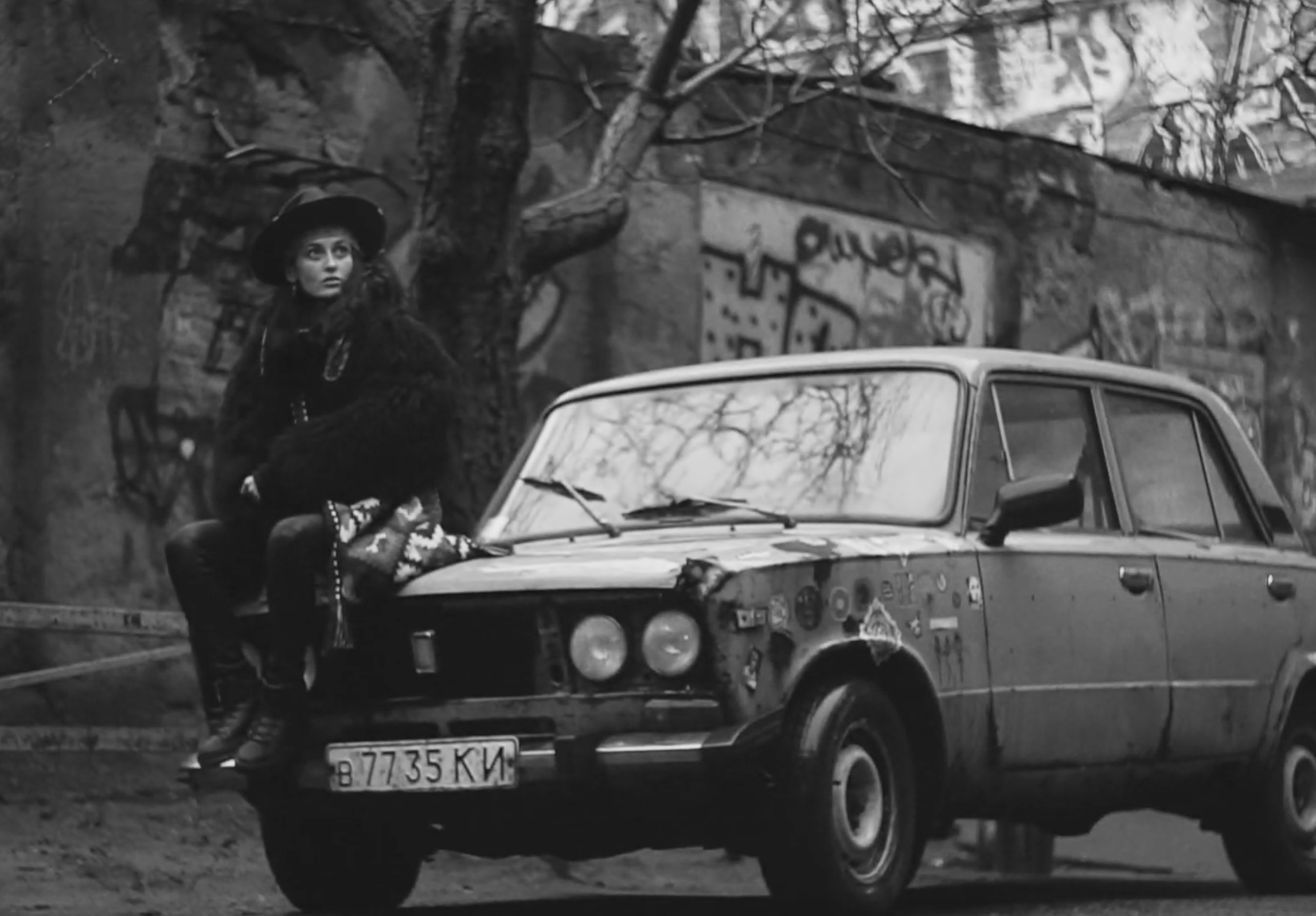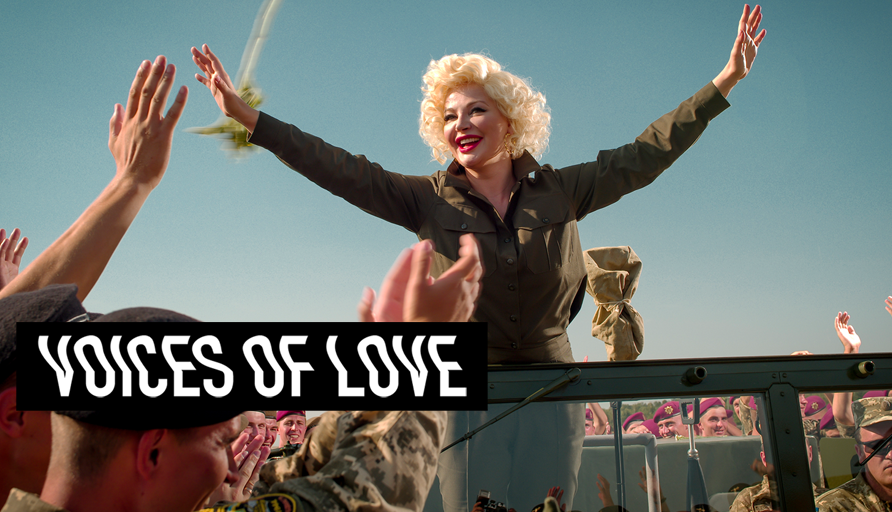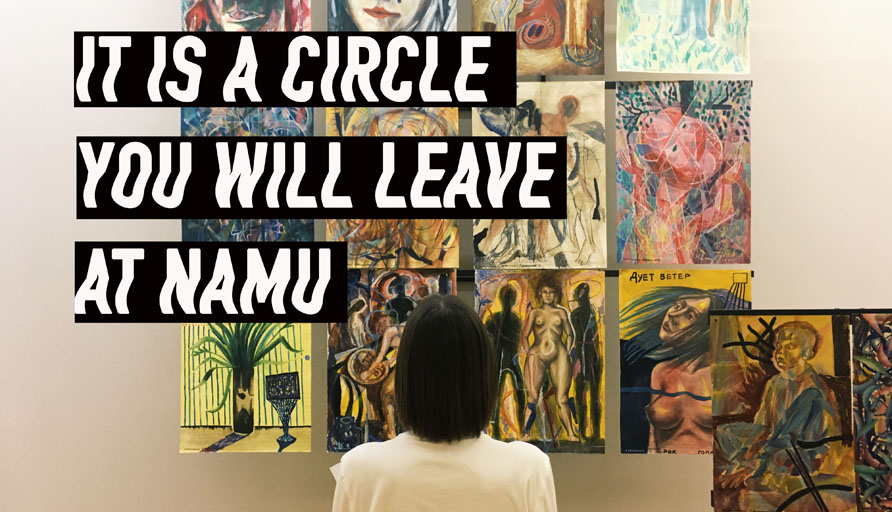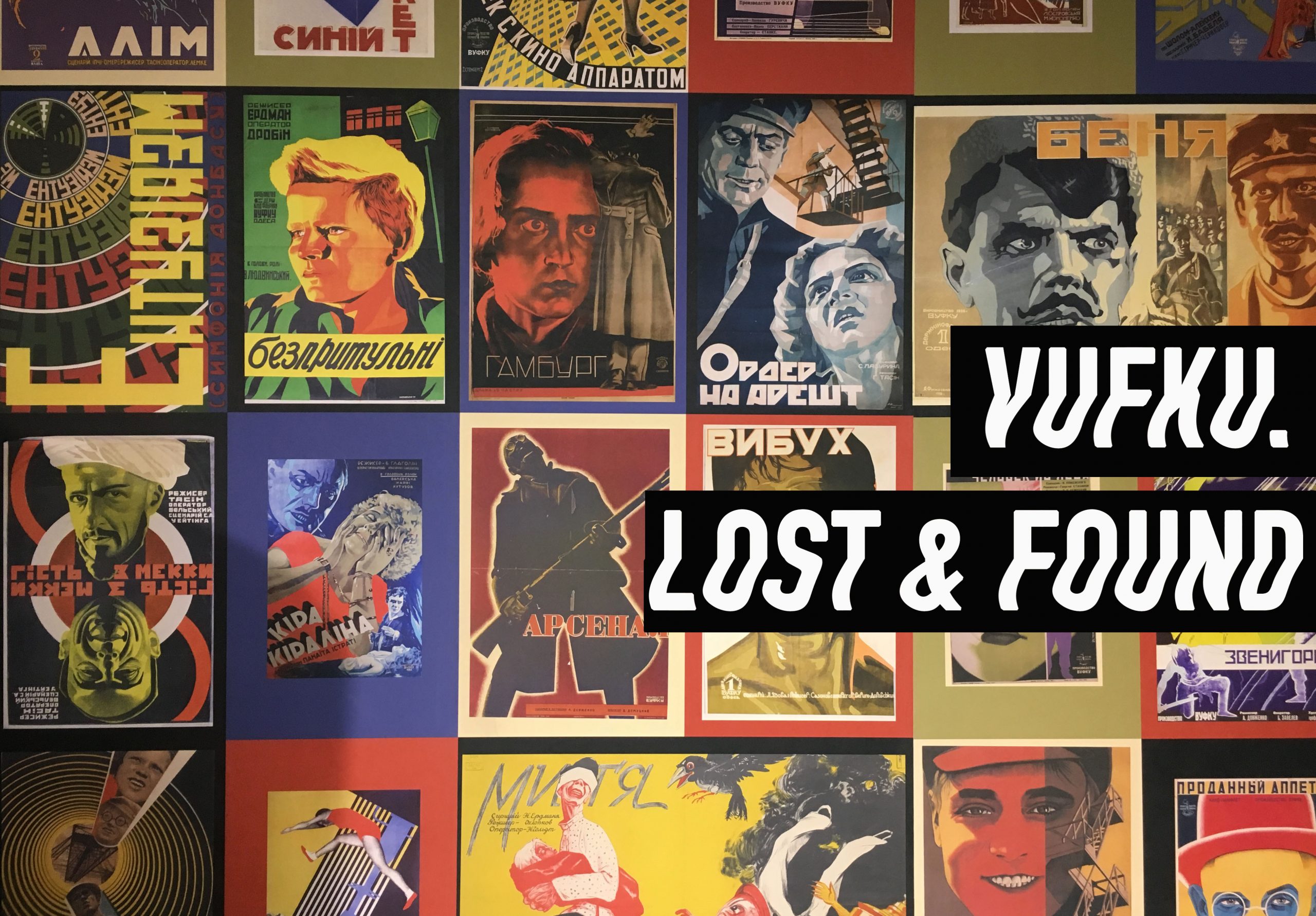
The Best Ukrainian music of 2020
December 22, 2020
This year, as the world went into lockdown, Ukrainian musicians turned to archives, established artists like DakhaBrakha pushed the boundaries to redefine their sound, young female artist Luci presented her long-awaited LP, and Blooms Corda’s tunes kept us sane during truly a chaotic year.
As the year slowly winds down, listen to what we at SEE KYIV considered to be some of the musical highlights of 2020. Listen to selections from this article on playlists:
Music of Your Perfect Morning
In a difficult year, like 2020, pop tunes helped keep us going. One of our favorites was Sottoportico EP by Blooms Corda. Described by the band as the song to start the day with – “This is your perfect morning…”, sings the founder of the project, Danylo Galyko, on the first song of the EP – it features vocalists of Grisly Faye and Sophistication. Jazz, funk, saxophone, and fragile vocals throughout Sottoportico immerse the listener in maximum tranquility. The music was recorded at Galyko’s home DIY studio. At the time, he was under tremendous pressure: “right before the beginning of quarantine I lost my job, the finish of the album was in jeopardy. I put up for sale my drawings and poems, all the money from the sale of which went to finish this album,” said Galyko.
Balancing out the melancholy, is the warm, dreamy single, Kosatka (“Killer Whale”), by indie band, Latexfauna, and the energetic Living My Life by dance pop-duo TVORCHI, who claimed that lockdown became the catalyst for their creativity. Even pop act Luna, who is famed for the somberness of her works, embraced positive vibes in her Fata Morgana EP. But it was Djozers, together with Grisly Faye, who really warmed our heart with the track “Ostannie Proshchavai” (“The Last Farewell”). Their music video captured the reality of lockdown, featuring a food delivery courier in Kyiv.
Perfect mornings can be defined by a good cup of coffee. “I’ll take two espressos – because I want so. And I’ll drink it with an aeropress coffee, because I want so.” The love for the drink, treat-your-self moments in life and freestyle rap improvisation are presented in the single Cofein by a R&B and electronic music artist, Zbaraski. His latest album “Bo Ya Tak Khochu” (“Cause I Want So”) was one of the biggest sensations of 2019 in Ukraine. This year, the artist unveiled a cozy music video about different generations in a family and their shared home.
The warm notes from the debut album of Dao Park, Podorozh (“Journey”), also captured our imagination. Featuring a melange of beautiful funk and neo-soul aesthetics, it came with jazz vocals by Uliana Holinei. The band’s music video for their first single, Deshcho Koly, was filmed on VHS about the journalists from the 1990s who report from the streets of Kyiv.
Black Horse of Ukrainian Pop
But it was the debut album of Luci, “Enigma” that was truly our favorite album of the year. This is the one we had been waiting for since the release of her first single in 2017. Luci represents strong, female energy intermeshed with dark, macabre audio. Kristina Varlamova, aka Luci, takes her inspiration from Ukrainian pop music from the late 1990s. In her debut tracks, she was accompanied by some of the brightest names on Ukrainian electronica – Bejenec, Pahatam and Koloah. Read the full review of Enigma here. To cap off the year, Luci released her single Nich (“Night”) just a few weeks ago.
The Main Ukrainian Band in Search of a New Sound
Outside of Ukraine, it was DakhaBrakha that attracted the lion’s share of attention. Enormously popular, they have spent much of their career on tour, appearing at Glastonbury, KEXP radio and NPR Music Tiny Desk. Since it was founded, the band has evolved from an eccentric project of Kyiv’s Dakh theater into one the country’s brightest prospects. At the core of their music are traditional songs recorded during expeditions in Ukrainian villages.
The group’s latest album, Alambari, typifies their global stature. Filmed in Brazil, it marries experimental folk tunes with free-wheeling jazz. Compared with their earlier productions, such as their ambient, minimalist album Shliakh (“Path”), their latest creation represents their implacable search for new sound. At the same time, the band has not moved too far from their roots in raw, harsh music found in their 2010’s song “Тьолки” (“Chicks”). But their production has become more complicated and wild. During the lockdown, the band together with the director Vlad Troitsky released a music video which was shot via Zoom, for which they invited people to act simultaneously in their zoom cells.
Musicians Turned to Archives
Among Ukrainian artists – both musical and visual – there is a growing interest in studying archives and collective memory. This year, Open Opera Ukraine Vocal Ensemble presented the album Partesny Concertos 17th-18th Centuries: M. Dyletsky / Anonyms, an in-depth study of polyphonic Ukrainian singing of the 17th century. Ukrainian Baroque is little-known, but songs, often by unknown composers, number in their thousands. To find recordings of this music, the ensemble delved into the archives of Vernadsky Library Manuscript Institute in Kyiv.
Another project that can help you to learn more about the history of Ukrainian classical music is UL Classic app (available for iOS and Android) that features information on the prominent Ukrainian composers such as Borys Liatoshynskyi, Stefaniia Turkevych, Mykhailo Verbytskyi and more.
Pushing even deeper into the archives, Kyiv-based composer Oleg Shpudeiko aka Heinali, studied late Medieval and early Renaissance polyphony on his way to produce Madrigals. Combining period instruments with electronic polyphony on a modular system, it is a masterpiece. For this year’s list, we have selected his song, Beatrice, that features violist Igor Zavgorodnii, improvising on a baroque viola.
Drawing from more recent themes is NOVA OPERA, which reflected on the damage caused by the Chernobyl disaster. Although the ecological disaster to the vicinity of Chernobyl is well known, less so is its effect on the area’s rich repertoire of ancient Polesia songs. The Chornobyldorf. Archaeological opera unifies experimental and classic music, traditional singing and video art. Composers Roman Hryhoriv and Ilya Razumeiko incorporated bandura and cymbals, alpine zither, harp, cantele, morin huur to lend a deep polyphony of tones to its post-modern world.
The Sounds of Chernobyl, is another project which aimed to reconsider the catastrophe. Valeriy Korshunov, the founder of the project, produced a library of sounds captured in the exclusion zone, before going on to invite ten musicians to write songs, using the sounds from his library.
Our favorite fragment from this project is by the band Vagonovozhatye, known for their energetic live performances, combining electronic music with spoken word. Their song, Kaseta (“Cassette tape”) dwells on the fate of that old, and increasingly rare device: the cassette. Vagonovozhatye music video contains footage of everyday life in Pripyat, an atomograd built for the workers of the Chernobyl Nuclear Power Plant.
“Don’t break, don’t saw, don’t cut the branch on which you sit. Don’t wait, don’t be silent – whoever is silent will face the trouble. Don’t spit into the river – you will come for water more than once. Chernobyl forever! We need no more happenings like this”. These are the lyrics of the 2000’s environmental anthem “Chernobyl Forever” by Skryabin which sounds even more relevant today. Twenty years later, for The Sounds of Chernobyl project, the song was covered by the hero of the Kyiv’s punk rock scene of the mid-2000s, the frontman of Dymna Symish, Oleksandr Chemerov. Alongside him is the frontman of the Belarusian punk rock band Brutto, Siarhei Mikhalok. The artists kept the atmosphere and late 90s electronic tunes which defined the original track.
Archive record label Shukai (“Hunt”, “Look for”) focuses on bringing back to life the lost tapes from 60–80s Soviet Ukraine. In 2020, the label presented the experimental and psych jazz album from 1976 Kobzareva Duma, by Shapoval Sextet. It was considered to be lost, but in recent years the tape was found and now can be seen as a prominent example of opposition to the Soviet cultural doctrine.
US orchestra (Ukrainska Silska Orchestra) also works with the music of the past, but specialises in recreating traditional Ukrainian instrumental music. Their latest album, Smoke in the Mustache is played with two violins and tambourine, just like at the original parties from early twentieth century Ukrainian villages. The band members are professional ethnographers who find the music at folklore expeditions and music archives.
In this broad category is Liniia Mannerheima (“Mannerheim Line”), as their music is inspired by the Russian-Ukrainian war. Their single “De Tvoia Liniia?” (Where is your line?) combines heavy guitars, electronic music and the spoken word. The frontman of the band, Serhiy Zhadan is also one of the most famous contemporary Ukrainian poets and writers. In the music video for “De Tvoia Liniia?” you can pick out landscapes of the frontline territories of Donbas, in particular Stanytsia Luhanska, 10 kilometers from occupied Luhansk.
Revival of Ukrainian Hip Hop
Last year, Ukrainian rap became popular yet again when Alyona Alyona burst onto the scene. Almost instantaneously, the rapper, previously a kindergarten teacher, became an international success. Since then, the New York Times has selected her as one of the top 15 European region’s most important acts. In 2020, Alyona released three different singles dedicated to dancing. It is possible that the ideas came to her after she appeared in the show Dancing with the Stars. We have selected the single, Wild Dances, for our list.
Brat is the Ukrainian grime we’ve been wanting for more years. The ironic lyrics about sad, political realities and aggressive electronic sound and bass have been well-captured in his second album, Culture shock.
Another exciting new name is Lviv-based rapper Stepan Burban aka Palindrom. His music is the mix of new wave, lo-fi, trip hop and synth pop. Burban names one of his inspirations the early 2000s Ukrainian band Skryabin and quotes 1960s Ukrainian poets. In 2020, Palindrom released the single “Ne dozhyv” (“Did not live”) which became a soundtrack for a documentary about the poet and dissident Vasyl Stus who died in 1985 at Soviet forced labor camp for political prisoners.
Support of LGBTQ+ Movement
Ukrainian indie and pop acts came together in support of Kyiv Pride and LGBTQ+ community. The music video for “Rizni Rivni” (“Different Equal”) advocates for acceptance and equality. It features Constantine, Latexfauna, Alina Pash, Sergey Babkin, Yuko, [O] band, Krut, Secret Avenue band, Kulshenka, Ofliyan, Lucas Bird, Shy, U:Lav and Wwwaaavvveee. In 2020, Pride month in Ukraine was held online, the annual march was postponed due to COVID-19. This is not the first collaboration of such matter, last year the pop-diva Iryna Bilyk released the song “Ne khovai ochei” (“Don’t hide your eyes”) in support of Kyiv Pride.
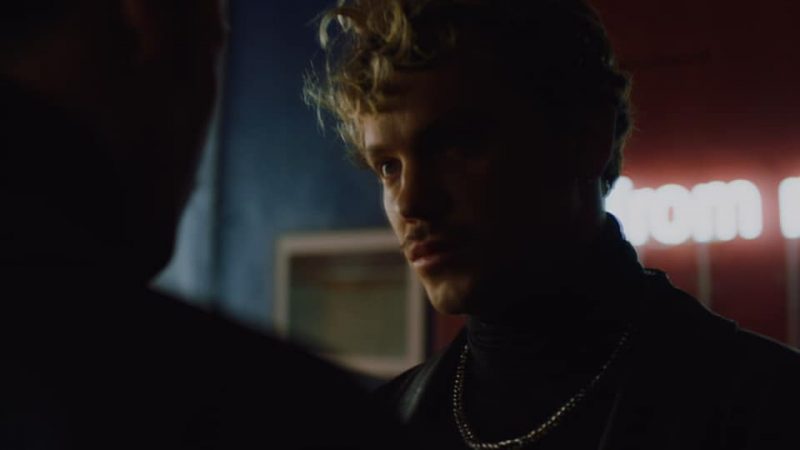
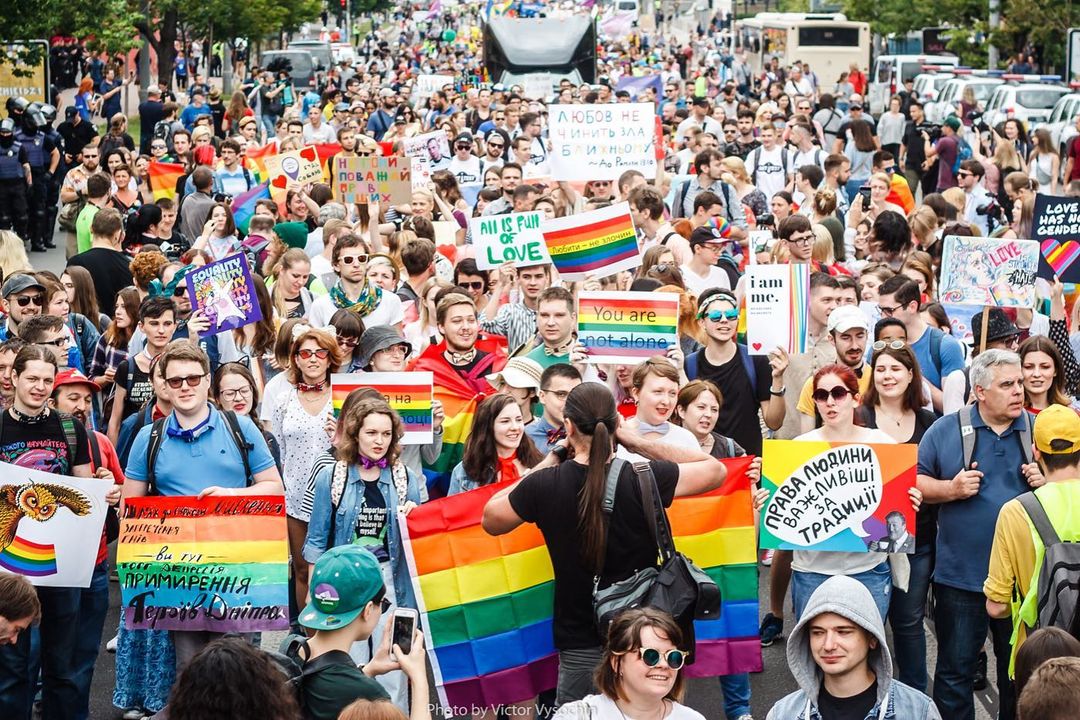
Electronic Music Underground Now Has Slightly More Recordings
One of the ways to understand the current state of Ukraine’s electronic scene is to listen to a compilation, Intermission which was released by in-house label of Kyiv club ∄. It features the underground electronic artists such as John Object and Voin Oruwu who have performed live during CXEMA parties in Kyiv. Included on this year’s list the track Babusia (“Grandma”) by young experimental artist Maryana Clochko, who quoted a local newspaper about a grandma who helped homeless cats and died from the illness. We were happy to finally listen to the single by zakat95 a side project by electronic producer Cape Cod, which focuses on early 90s trance, acid and techno. The First time we heard him was a few years ago at CXEMA in Kyiv, and we wanted to have his tracks in our playlist ever since.
Dmitriy Avksentiev aka Koloah is one of the new faces of Ukrainian electronic music. Being a highly productive music producer, he performs under multiple names. As Voin Oruwu focusing on heavy, raw electronic sound and his project Koloah he defines as “forward thinking electronic music”. We have chosen Koloah’s music which was released in 2019 to the list, because he released beautiful music videos that compliment his songs very well. In his minimal video for “Phenix Polyth,” a track which combines electronica with ambient guitar and heavy rhythms, the dancers of Apache Crew move expressively in one of Kyiv’s abandoned swimming pools. Read the full review of Koalah’s “Salon Imaginalis” album here.
Honorable mentions
In the beginning of 2020 a young Ukrainian filmmaker, Yura Katynsky, presented The Voiceover Project, a conceptual approach to sound recording, in which he attempts to bridge the gap between musicians and the audience. His project featured DakhaBrakha vocalist Nina Garenetska, Kazka’s musician, Dmytro Mazuriak, and more. You can read more about it here.
Ptakh_Jung, the electronic jazz musicians by the end of the year released an experimental instrumental single “Dnipro”. The honorable mention goes to their music video for Monika, a short film about a teenager who goes to Kyiv’s rave.
There were a few awesome new indie acts that we hope to have a bright future and would release more songs. The honorable mention goes to Nytso Potvorno for capturing the vibe of Kyiv after parties and post-rock band Mantra Keruaka for bringing back the electric guitar to our musical landscape.
After the lockdown was introduced in spring of 2020, musicians switched to the online live performances. Among the streams that we enjoyed the most this year were the series of the music media Slukh which managed to capture the pure raw energy of Vagonovozhatye and Alyona Alyona performances and the cozy home live stream by Blooms Corda.
Overall Reflection on 2020
Unlike previous years, due to the COVID-19 pandemic, we haven’t been to live performances of the artists mentioned in the article, instead, we listened to their music on our speakers and headphones. Due to the lockdown, the music industry and music venues entered the financial crisis, some nightclubs asked for donations to pay the debts. The future of the music industry in 2021 remains uncertain, but we hope for the best.

